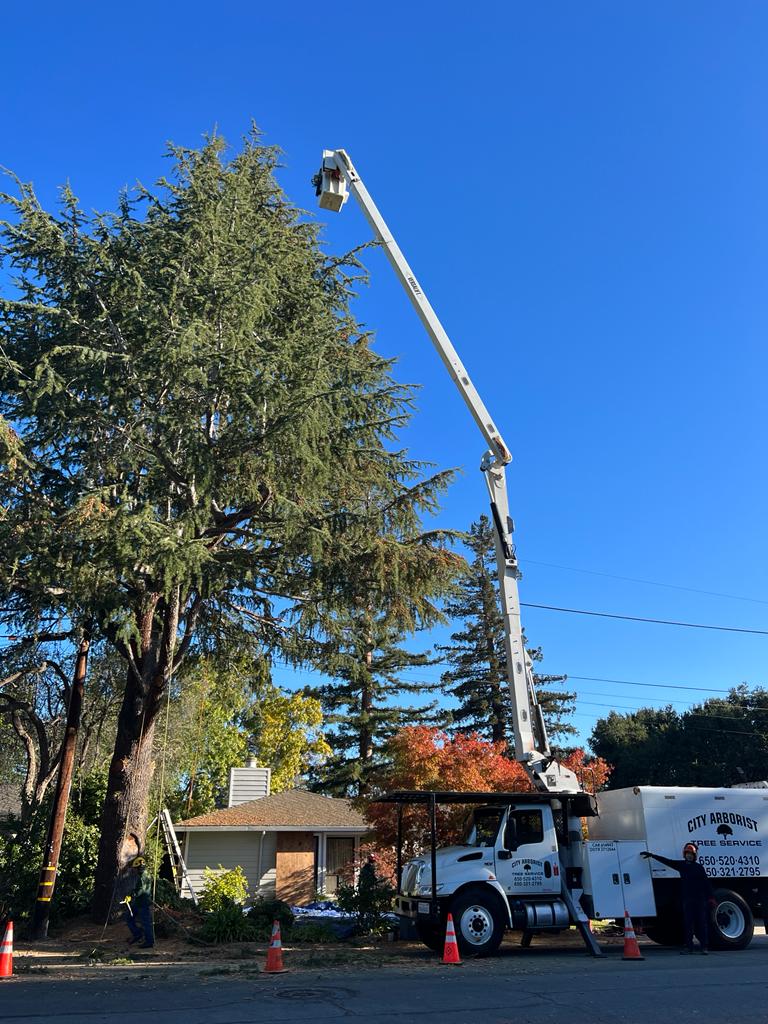MAIL US :
cityarboristtreeservice@gmail.com
CALL US :
650-321-2795 / 650-520-4310
cityarboristtreeservice@gmail.com
650-321-2795 / 650-520-4310
In the world of tree care, understanding key terms is crucial for informed decisions. At City Arborist Tree Service, we simplify the language of arboriculture, ensuring clarity and transparency in every interaction. From pruning to disease management, let us guide you through the nuances of tree care with expertise and precision.
Usually a percentage of reduction will follow this term, (e.g. by approximately 25%). This describes a method of physical size reduction of the tree crown, (the crown being the portion starting at the lowest branch and ending at the very tips of the branches). The height and spread of the tree is reduced by shortening back leaders and laterals to suitable smaller branches, leaving a more compact tree. This method of size reduction is known as drop crotching.
Often followed by a percentage. A preferred method of pruning by removing interior growth and selectively thinning out branch tips. Overall size of the tree remains the same and retains natural form. Although the tree will appear lighter, airier and one should be able to see attractive branch structure, the crown should retain even branch coverage without holes or gaps.
This method rids the tree of extra weight, and allows even passage of wind, reducing wind- sail effect. It also allows free passage of air and light into the tree’s interior.
The pruning of the tips of lower branches frequently done on weeping type trees to enable access or keep sight lines clear.
A drastic means of pruning to mature trees, involves removal of all green growth, leaving a “hat rack” impression. Not recommended for maturing trees unless it is to be carried out annually. It leads to weak sprout attachment and if not attended to regularly, can cause dangers of limb-shed. It can be a useful way of controlling trees if the process is started young and done annually.

Give us the opportunity to showcase our expertise! At City Arborist Tree Services, we're ready to prove our commitment to exceptional tree care.
Our commitment to transparency and education empowers you to make informed decisions about the health and well-being of your trees.
This word sends a shudder through the Arboricultural world! It is a seriously detrimental tree practice, which should not be encouraged. It leads to wounds which never heal, leading to decay and structural weakness, weak sprout attachment and danger of limb-shed in future years. Trees that require “topping” should be considered as candidates for removal and replacement.
This involves the severance of sections of roots that are causing or likely to cause damage to hard surfaces, foundations, etc. Root barriers can often be inserted following this mechanical operation to prevent further encroachment.
The mechanical grinding only of stumps to a maximum of 18″ below ground level, (grade), resulting in a pile of dirt and wood chips that may be used as an acceptable mulch.
The insertion, (by means of high pressure hydraulic action), of a dilute liquid fertilizer. This is injected directly into the root zone, and is primarily used for trees on soils with poor nutrient status or obvious deficiencies.
The control of insects or disease by hydraulic spraying of insecticides, fungicides, etc.